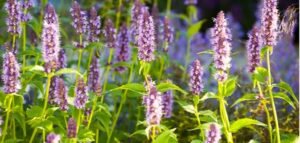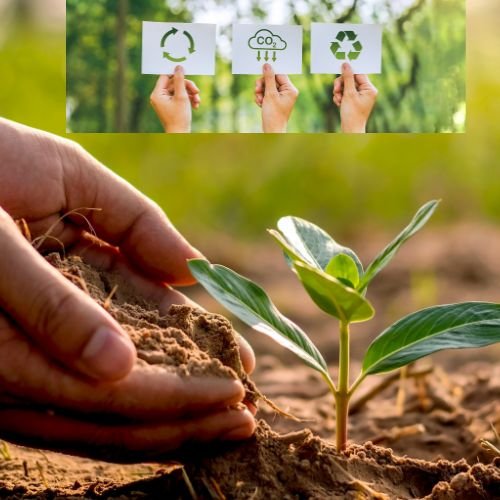Everyone agrees that trees help – in a multitude of ways, to improve human and planetary health.
Trees and native plans can:
- Improve air quality
- Lower local and regional temperatures
- Absorb Carbon Dioxide
- Prevent soil erosion
- Help to manage flooding and droughts
- Provide invaluable food for humans and wildlife
But currently, we are facing an annual shortfall of 3-5 billion tree seedlings in the USA alone, according to the American Tree Foundation.
What is a Regenerative Tree and Plant Nursery?
A regenerative tree and plant nursery aims to grow trees and plants with minimal damage to soils, the environment, and human health. Through ecological services, it can improve the local soil, and landscape and improve carbon capture, and soil retention whilst safeguarding local insects and wildlife.
The Benefits of Supporting Local Tree and Plant Providers
By supporting your local regenerative tree and plant nursery, you are actively contributing to a greener and more sustainable future. Here are some of the key benefits:
1. Species Conservation

Wildfires, pest pressure, and drought have led to an increasing depletion of natural tree reserves, globally. Many are becoming extinct.
Essential not only for climate control and food – for humans, trees also provide habitat and food support to up to 40 species of birds, insects, and wildlife per tree. Illegal logging threatens the loss of many species.
By helping to improve tree stock in your region you can not only help preserve local species of trees and plants, (many wildflowers are also now on extinction watches, too,) you can improve the health and temperature control of the whole ecosystem.
2. Biodiversity & Ecological Services
Regenerative nurseries aim to propagate plants and trees without damaging the soil and minimize the impact on air quality, water, and pollution of the local environment (Unlike Big industrial agricultural methods).
Regenerative agriculture avoids relying on fossil fuel-based pesticides and fertilizers, which harm local wildlife and pollute local water systems.
Using minimal fossil fuel-based inputs hugely reduces a Tree and Plant Nursery’s Carbon Budget, and with the establishment of standing mature seed trees, it can be Carbon Net Zero in as little as 6 years.
3. Local Training

Using regenerative agriculture is the only way the planet can sustainably support our global population, and support our wildlife.
Techniques such as cover-cropping, using organic fertilizers, natural pesticides, and pest management systems can be taught to all ages.
A regenerative agriculture-based system can be applied to all kinds of crops, and all scales from backyards to thousands of acres. Your local plant nursery can be an invaluable resource for the next generation of growers and farmers – as well as the current one!
Globally growers are embracing this system that lowers input costs, and improves profits whilst also improving their soil, water, and air quality.
(For examples across the world check out this brilliant PODCAST)
4. Health and Well-being

As more and more studies show how glyphosates used in commercial pesticides impact brain development in children and are linked to the rise in chronic diseases in adults, saving human health is critical.
Right now increasing the numbers learning to grow all that we need without fossil fuel-based pesticides and fertilizer has never been more urgent.
Similarly, with microplastics now being found everywhere, in the soil – and even in human breast milk, we must find new ways of propagating plants without the use of plastics.
Take Action Locally & Internationally
Here are some practical ways to support new regenerative tree and plant nurseries:
1. Support my new Project
Yes, this is a plug for my own Nursery Startup!. Coming soon to an area near you – if you are in the USA. Small and medium-sized plant and tree nurseries a one way of guaranteeing resilency now and in the future, to ensure we always have ALL the tree and plant seedlings we need.

Help launch our new startup nursery here
2. Select Your Plant Providers Carefully
There are many small-scale regenerative and organic tree and plant nurseries – why not, for all the benefits outlined above – support their growth and existence by just purchasing from them?
Sometimes sale prices are a little higher- as the plants and trees have been produced with more care, and are usually of a higher quality as they have not been fed “chemicals” that do little to increase their long-term health.
(It’s like someone taking lots of vitamin supplements but never eating a single fresh vegetable or fruit).
3. Speak To People
You can help others, as well as yourself, avoid falling into depression about the current climate change situation,
There is nothing better than taking an action – however small. Why not share your thoughts with friends, family, and neighbors? Encourage them to get involved in community activities organized by conservation and wildlife organizations.
Or you can volunteer your time, attend workshops, or offer to give your tree and plant purchases to local schools and organizations. Share your produce, flowers, and your regenerative plant growing methods.

4. Grow More Yourself
We can all cut our own Carbon Emissions, AND improve our health by growing more food, and ornamental plants and trees ourselves.
Even if you only have a windowsill -why not grow some organic herbs like basil or a few tomato plants?
One small area can yield hundreds of baby flowering plants or trees.
If you have the space but not too much time – you could plant some easy-to-grow native trees and perennial plants like Anise Hyssop that bees and butterflies love.

Conclusion
I hope the above illustrates that
MORE TREES = ESSENTIAL GOOD BUT
REGENERATIVELY GROWN TREES = BETTER!
Be part of the next Agricultural Revolution and support your regenerative agricultural growers, wherever you are!
Written by Parm Kaur.

